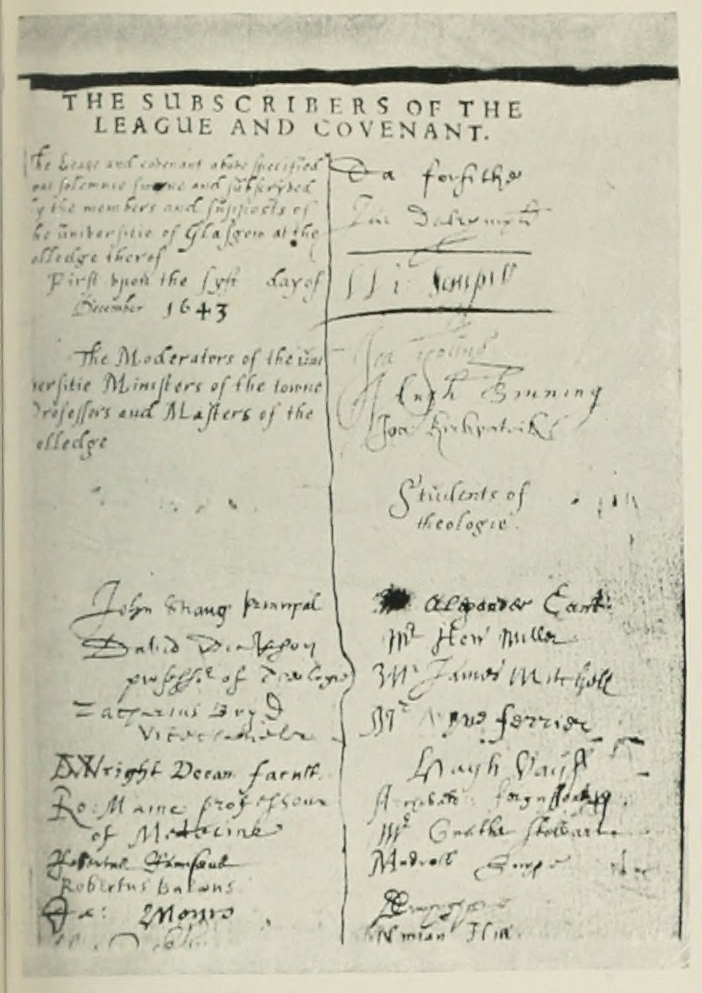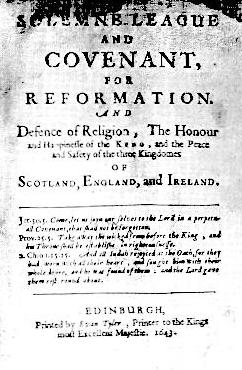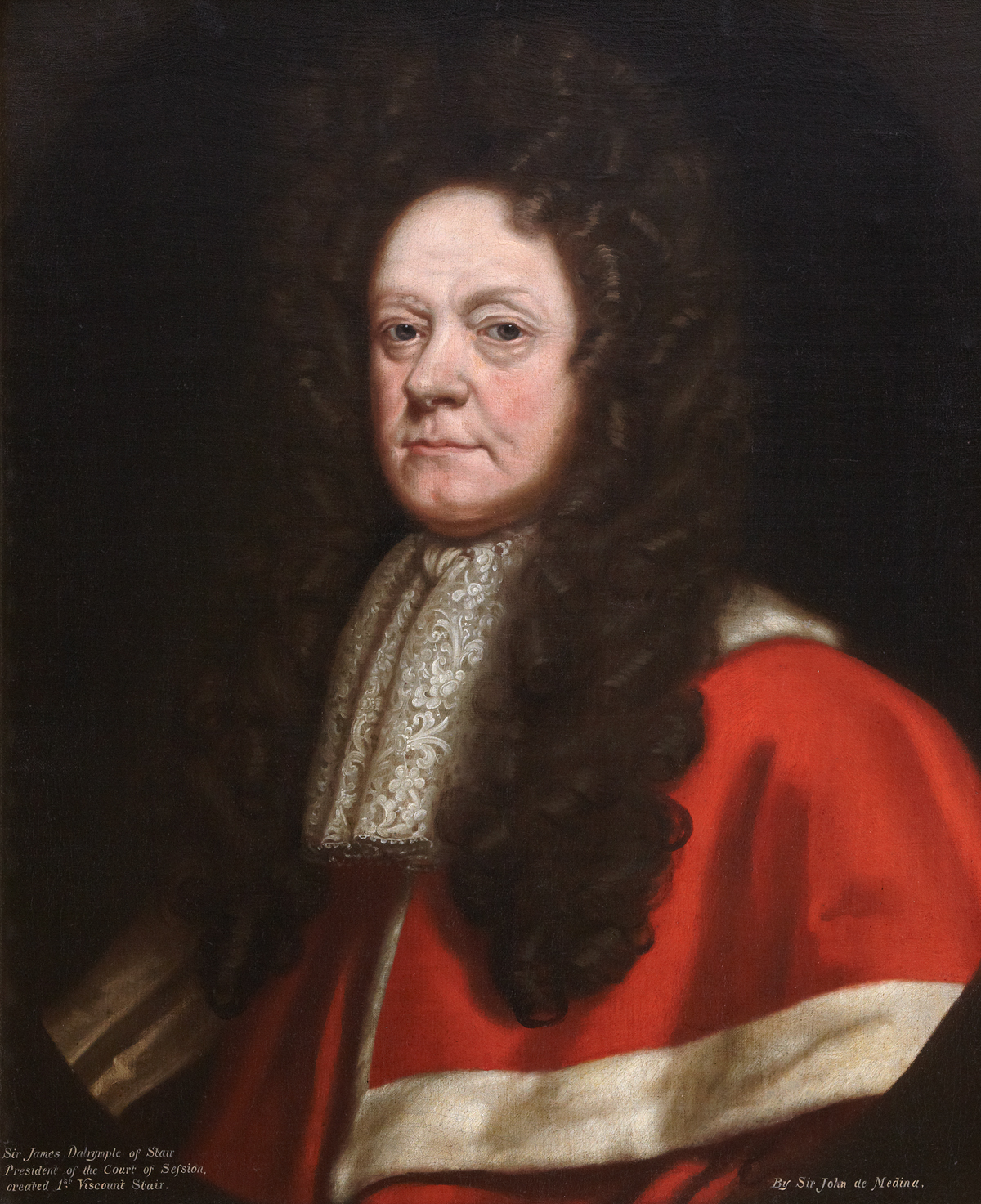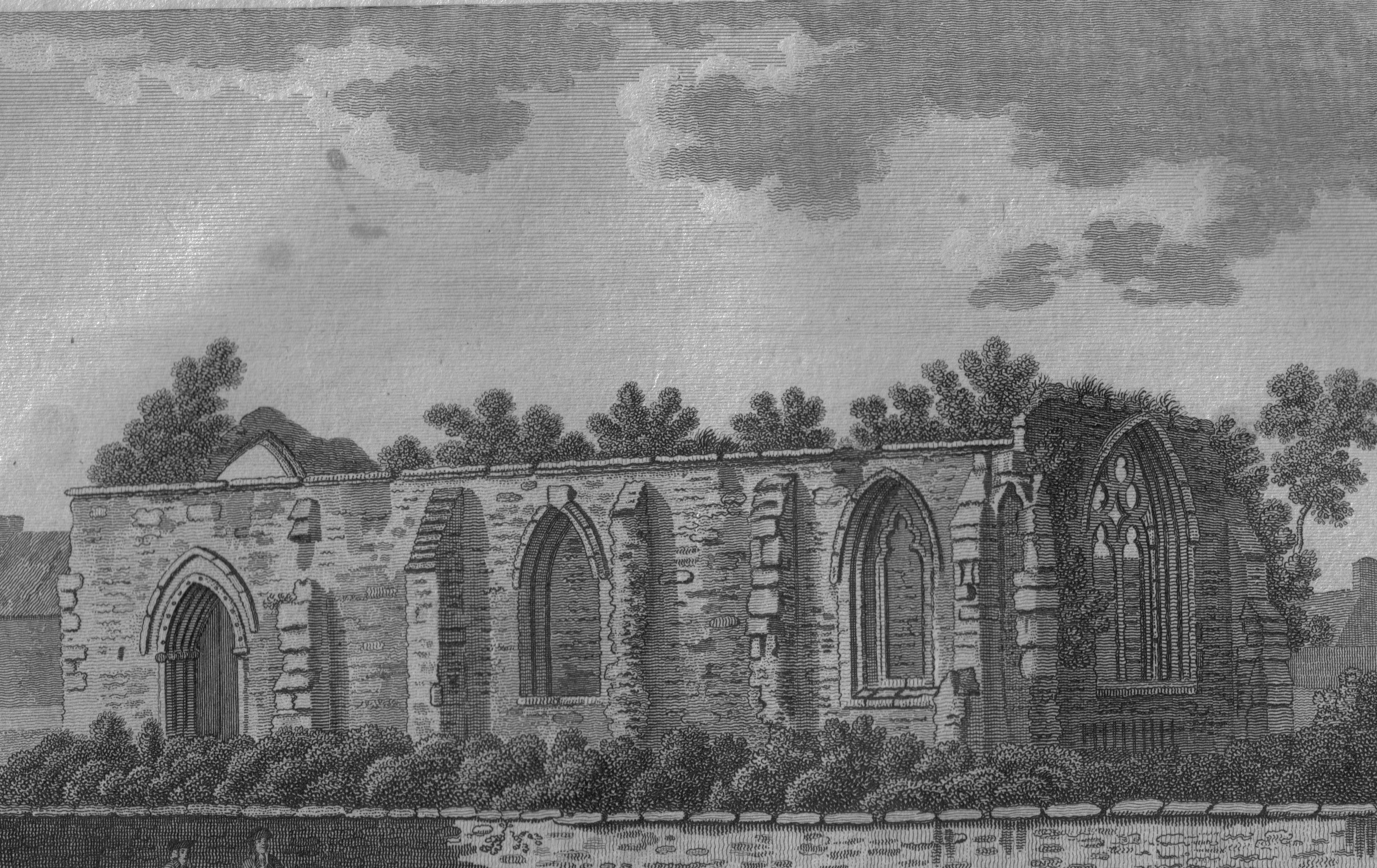|
Hugh Binning
Hugh Binning (1627–1653) was a Scotland, Scottish philosopher and Theology, theologian. He was born in Scotland during the reign of Charles I of England, Charles I and was ordained in the (Presbyterian) Church of Scotland. He died in 1653, during the time of Oliver Cromwell and the Commonwealth of England. Personal life Hugh Binning was the son of John Binning of Dalvennan, Straiton, South Ayrshire. and Margaret M'Kell. Margaret was the daughter of Matthew McKell,Binning, Hugh; Kindle Locations 20469-20474 "Matthew M’Kell, was a minister in the parish of Bothwell, near Glasgow. "After having been, on different occasions brought before the Privy council, and imprisoned, he was, on the 8th of January, 1674, upon his refusing to engage not to preach, ordered to confine himself to the parish of Carluke, and security was required from him that he would appear before the Council at their summons ... He died at Edinburgh, in March 1681". (Works of Hugh Binning: Kindle Locatio ... [...More Info...] [...Related Items...] OR: [Wikipedia] [Google] [Baidu] |
Solemn League And Covenant
The Solemn League and Covenant was an agreement between the Scottish Covenanters and the leaders of the English Parliamentarians in 1643 during the First English Civil War, a theatre of conflict in the Wars of the Three Kingdoms. On 17 August 1643, the Church of Scotland (the Kirk) accepted it and on 25 September 1643 so did the English Parliament and the Westminster Assembly. English Parliament (First Civil War) At the time, the Protestant leaders of the English Parliament were in conflict with King Charles I. Fearing Irish Catholic troops could join the Royalist army, Parliament requested the aid of the Scots. The Presbyterian Covenanters promised their aid, on condition that the Scottish system of church government was adopted in England. This was acceptable to the majority of the English Long Parliament, as many MPs were Presbyterians, while others preferred allying with the Scots to losing the Civil War. After some haggling a document called "'' The Solemn League and Co ... [...More Info...] [...Related Items...] OR: [Wikipedia] [Google] [Baidu] |
Boot (torture)
The term boot refers to a family of instruments of torture and interrogation variously designed to cause crushing injuries to the foot and/or leg. The boot has taken many forms in various places and times. Common varieties include the Spanish boot (sometimes referred to as "scarpines") and the Malay boot. One type was made of four pieces of narrow wooden board nailed together. The boards were measured to fit the victim's leg. Once the leg was enclosed, wedges would be hammered between the boards, creating pressure. The pressure would be increased until the victim confessed or lost consciousness. Newer variants have included iron vises—sometimes armed with spikes—that squeezed feet and metal frames employed red-hot. John Spreul is reported to have been tortured with two different boots. In general, the boot was a mechanically-clever torture device and was widely employed throughout Europe to extract information. Spanish boot The Spanish boot was an iron casing for the leg ... [...More Info...] [...Related Items...] OR: [Wikipedia] [Google] [Baidu] |
James II Of England
James VII and II (14 October 1633 16 September 1701) was King of England and King of Ireland as James II, and King of Scotland as James VII from the death of his elder brother, Charles II, on 6 February 1685. He was deposed in the Glorious Revolution of 1688. He was the last Catholic monarch of England, Scotland, and Ireland. His reign is now remembered primarily for conflicts over religious tolerance, but it also involved struggles over the principles of absolutism and the divine right of kings. His deposition ended a century of political and civil strife in England by confirming the primacy of the English Parliament over the Crown. James succeeded to the thrones of England, Ireland, and Scotland following the death of his brother with widespread support in all three countries, largely because the principles of eligibility based on divine right and birth were widely accepted. Tolerance of his personal Catholicism did not extend to tolerance of Catholicism in general, an ... [...More Info...] [...Related Items...] OR: [Wikipedia] [Google] [Baidu] |
Covenanters
Covenanters ( gd, Cùmhnantaich) were members of a 17th-century Scottish religious and political movement, who supported a Presbyterian Church of Scotland, and the primacy of its leaders in religious affairs. The name is derived from ''Covenant'', a biblical term for a bond or agreement with God. The origins of the movement lay in disputes with James VI, and his son Charles I over church structure and doctrine. In 1638, thousands of Scots signed the National Covenant, pledging to resist changes imposed by Charles on the kirk; following victory in the 1639 and 1640 Bishops' Wars, the Covenanters took control of Scotland and the 1643 Solemn League and Covenant brought them into the First English Civil War on the side of Parliament. Following his defeat in May 1646 Charles I surrendered to the Scots Covenanters, rather than Parliament. By doing so, he hoped to exploit divisions between Presbyterians, and English Independents. As a result, the Scots supported Charles in the 16 ... [...More Info...] [...Related Items...] OR: [Wikipedia] [Google] [Baidu] |
Earl Of Dalhousie
Earl of Dalhousie, in the County of Midlothian, is a title in the Peerage of Scotland, held by the Chief of Clan Ramsay. History The family descends from Sir George Ramsay, who represented Kincardineshire in the Scottish Parliament in 1617. He received a charter of the barony of Dalhousie and also of the barony of Melrose on the resignation of John Ramsay, 1st Earl of Holderness. In 1618 he was raised to the Peerage of Scotland as Lord Ramsay of Melrose. However, as he did not like the title, he obtained a letter from James VI in 1619 to change it to Lord Ramsay of Dalhousie (with the precedence of 1618). He was succeeded by his eldest son, the second Lord. He sat as a member of the Scottish Parliament for Montrose in 1617 and 1621 and served as Sheriff Principal of Edinburghshire. In 1633 he was created Lord Ramsay of Keringtoun and Earl of Dalhousie, in the County of Midlothian, in the Peerage of Scotland. His grandson, the third Earl (who succeeded his father in 1674), foug ... [...More Info...] [...Related Items...] OR: [Wikipedia] [Google] [Baidu] |
Battle Of Bothwell Bridge
A battle is an occurrence of combat in warfare between opposing military units of any number or size. A war usually consists of multiple battles. In general, a battle is a military engagement that is well defined in duration, area, and force commitment. An engagement with only limited commitment between the forces and without decisive results is sometimes called a skirmish. The word "battle" can also be used infrequently to refer to an entire operational campaign, although this usage greatly diverges from its conventional or customary meaning. Generally, the word "battle" is used for such campaigns if referring to a protracted combat encounter in which either one or both of the combatants had the same methods, resources, and strategic objectives throughout the encounter. Some prominent examples of this would be the Battle of the Atlantic, Battle of Britain, and Battle of Stalingrad, all in World War II. Wars and military campaigns are guided by military strategy, whereas b ... [...More Info...] [...Related Items...] OR: [Wikipedia] [Google] [Baidu] |
Patrick Gillespie (minister)
Patrick Gillespie (1617–1675) was a Scottish minister, strong Covenanter, and Principal of the University of Glasgow by the support of Oliver Cromwell. Life He was third son of John Gillespie, minister of Kirkcaldy, by his wife Lilias, daughter of Patrick Simson, minister of Stirling; and brother of George Gillespie and the Quaker writer, prophet and preacher Lilias Skene. He was baptised 2 March 1617, was educated at the University of St Andrews, where he graduated in 1635, became minister of the second charge of Kirkcaldy in 1642, and of the High Church of Glasgow in 1648. From that time he took a very prominent part in public affairs, first as an extreme covenanter, and next as a friend and supporter of Cromwell. He strenuously opposed the " Engagement" for the rescue of Charles I, helped to overthrow the government that sanctioned it, and advocated severe measures against all ' malignants.' He considered the terms made with Charles II unsatisfactory, and after the ba ... [...More Info...] [...Related Items...] OR: [Wikipedia] [Google] [Baidu] |
David Dickson (minister)
David Dickson (1583–1663) was a Church of Scotland minister and theologian. Life David Dickson of Busby was born in Glasgow in 1583. He was the son of John Dickson, a wealthy local merchant with premises on the Trongate. He was at first intended for the mercantile profession, but instead studied for the Church. After studying at Glasgow University he gained an M.A. around 1601. He was then appointed Regent of Philosophy in the University. On 31 March 1618. he was ordained as minister of Irvine. He declared against the Perth Articles, and was summoned before the Court of High Commission. Declining its authority, he was deprived of office. In 1622 he was allowed to return to his parish. During the visitation of religious zeal in 1630, known as "the Stewarton Sickness," his prudence was notable, and the interests of practical religion were maintained. For employing in 1637 two of his countrymen, who were under the ban of Episcopal authority in Ireland, he was again calle ... [...More Info...] [...Related Items...] OR: [Wikipedia] [Google] [Baidu] |
James Dalrymple, 1st Viscount Of Stair
James Dalrymple, 1st Viscount Stair (May 1619 – 29 November 1695), Scottish lawyer and statesman, and a key influence on the Scottish Enlightenment. He was a leading figure of Scottish law, “and also one of the greatest thinkers on law across Europe has ever produced.” According to Alexander Broadie, Professor of Logic and Rhetoric at Glasgow University, in his book ''The Scottish Enlightenment'', the first Scottish enlightenment began Post Reformation in the 15th century, with figures such as John Mair (1467-1550), James Dalrymple (1619-1695), Duns Scotus (1265-1308), George Buchanan (1506-1582) and many others. These scholars were predominately educated at Paris university and then returned to teach at Scotland’s ancient universities – St Andrews, Aberdeen, and Glasgow. “Dalrymple graduated from Glasgow university in 1647 and was regent in arts there from 1641 until 1647. The following year he became an advocate and thereafter was appointed a judge. From ... [...More Info...] [...Related Items...] OR: [Wikipedia] [Google] [Baidu] |
University Of Glasgow
, image = UofG Coat of Arms.png , image_size = 150px , caption = Coat of arms Flag , latin_name = Universitas Glasguensis , motto = la, Via, Veritas, Vita , mottoeng = The Way, The Truth, The Life , established = , type = Public research universityAncient university , endowment = £225.2 million , budget = £809.4 million , rector = Rita Rae, Lady Rae , chancellor = Dame Katherine Grainger , principal = Sir Anton Muscatelli , academic_staff = 4,680 (2020) , administrative_staff = 4,003 , students = () , undergrad = () , postgrad = () , city = Glasgow , country = Scotland, UK , colours = , website = , logo ... [...More Info...] [...Related Items...] OR: [Wikipedia] [Google] [Baidu] |
Carrick, Scotland
Carrick (Irish Gaelic) is a former ''comital'' district of Scotland which today forms part of South Ayrshire. History The district of Carrick originally formed part of the 11th- to 12th-century Kingdom of Galloway, whose lords ruled it until 1186, when it was granted to Duncan, son of Gilbert of Galloway. He became the first to hold the Earldom of Carrick. His son Neil became the second Earl, but he had no male heir - accordingly, his daughter, Margaret (also known as Marjorie of Carrick) inherited and became Countess of Carrick. Upon her death in 1292 the earldom passed to her son Robert de Bruce, later to become King Robert I of Scotland (). Carrick saw some involvement in the Scottish wars of independence under the said Robert the Bruce, which culminated in his victory over the English at Bannockburn (1314). It witnessed much inter-family feuding during the sixteenth and seventeenth centuries, with various branches of the powerful Kennedys contending for land and honour. ... [...More Info...] [...Related Items...] OR: [Wikipedia] [Google] [Baidu] |
Maybole
Maybole is a town and former burgh of barony and police burgh in South Ayrshire, Scotland. It had an estimated population of in . It is situated south of Ayr and southwest of Glasgow by the Glasgow and South Western Railway. The town is bypassed by the A77 road, A77. History Maybole has Middle Ages roots, receiving a charter from Donnchadh, Earl of Carrick in 1193. In 1516 it was made a burgh of regality, although for generations it remained under the suzerainty of the Kennedy clan, Kennedys, afterwards Earl of Cassillis, Earls of Cassillis and (later) Marquess of Ailsa, Marquesses of Ailsa, the most powerful family in Ayrshire. The Archibald Angus Charles Kennedy, 8th Marquess of Ailsa, Marquess of Ailsa lived at Cassillis House, just outside Maybole until its sale in 2007. In the late seventeenth century, a census recorded Maybole was home to 28 "lords and landowners with estates in Carrick and beyond." In former times, Maybole was the capital of the district of Carr ... [...More Info...] [...Related Items...] OR: [Wikipedia] [Google] [Baidu] |







